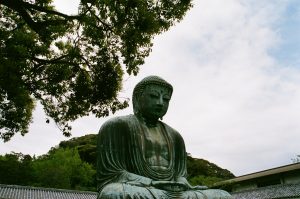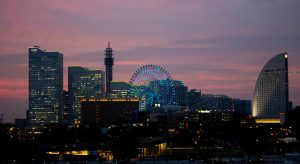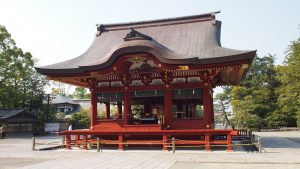 Kamakura is a seaside Japanese city just south of Tokyo. Most recognizable landmark is the Kotoku-in Temple’s Great Buddha, a roughly 13m-high bronze statue still standing after a 15th-century tsunami. Yokohama city contains a large Chinatown with hundreds of Chinese restaurants and shops. Also known for Sankei-en Garden, a botanical park containing preserved Japanese residences from different eras, and the seaside Minato Mirai district, site of the 296m Landmark Tower.
Kamakura is a seaside Japanese city just south of Tokyo. Most recognizable landmark is the Kotoku-in Temple’s Great Buddha, a roughly 13m-high bronze statue still standing after a 15th-century tsunami. Yokohama city contains a large Chinatown with hundreds of Chinese restaurants and shops. Also known for Sankei-en Garden, a botanical park containing preserved Japanese residences from different eras, and the seaside Minato Mirai district, site of the 296m Landmark Tower.
Tour Itinerary
Kotoku-in (Great Buddha of Kamakura) Kōtoku-in is a Buddhist temple of the Jōdo-shū sect, in the city of Kamakura in Kanagawa Prefecture, Japan. Its mountain name is Taiizan, and its common temple name is Shōjōsen-ji.
Hokokuji Temple (Takedera Temple) is famous for its bamboo garden, it is also known as “Bamboo Temple”. A statue of Gautama Buddha, called Shaka Nyorai in Japanese, in a sacred hall is the temple’s principal image.
Hase-dera Temple is one of the Buddhist temples in the city of Kamakura in Kanagawa Prefecture, Japan, famous for housing a massive wooden statue of Kannon. 
Kamakura Komachidori is busy pedestrian walkway lined with apparel, gift & souvenir stores, plus eateries & sweet shops.
Tsurugaoka Hachimangu Shrine is a cultural center of the city of Kamakura and serves as the venue of many of its most important festivals with two museums. Two beautiful ponds represent the Taira and Minamoto clans.
Meigetsuin (Hydrangea Temple) is famous for its hydrangeas, it’s also known as The Temple of Hydrangeas. The main object of worship is goddess Shō Kannon.
 Enoshima Island Enoshima’s “Sea Candle” lighthouse is a prominent symbol of the Shonan area. Its observation platform offers a magnificent 360-degree view, boasting sights such as Mount Fuji, Tokyo Tower, the Boso Peninsula, Izu Oshima, and more. An elevator takes you to the observation deck from the first floor.
Enoshima Island Enoshima’s “Sea Candle” lighthouse is a prominent symbol of the Shonan area. Its observation platform offers a magnificent 360-degree view, boasting sights such as Mount Fuji, Tokyo Tower, the Boso Peninsula, Izu Oshima, and more. An elevator takes you to the observation deck from the first floor.